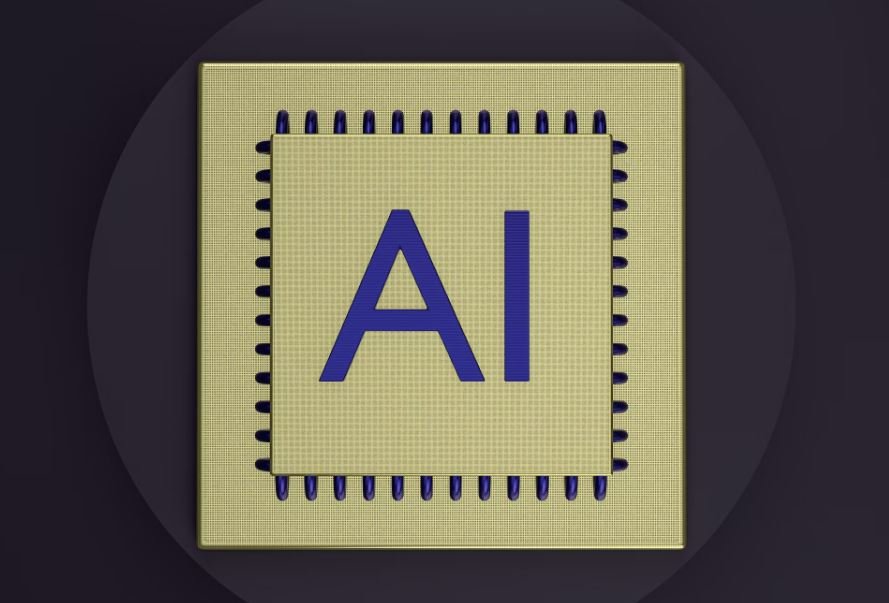Application of Piaget’s Theory of Cognitive Development
Jean Piaget, a Swiss psychologist, is known for his groundbreaking theory of cognitive development in children. His theory, which focuses on how children acquire knowledge and develop thinking abilities throughout different stages of their lives, has found widespread application in various fields. From education to psychology, Piaget’s theory has provided valuable insights into child development. This article explores the application of Piaget’s theory and its impact in different domains.
Key Takeaways:
- Piaget’s theory of cognitive development explains how children acquire knowledge and adapt their thinking through different stages.
- His theory has been influential in the fields of education, psychology, and child development.
- Piaget’s four stages of cognitive development are the sensorimotor stage, preoperational stage, concrete operational stage, and formal operational stage.
- Teachers can apply Piaget’s theory by creating age-appropriate learning experiences and promoting active engagement.
Application in Education
One significant application of Piaget’s theory is in the field of education. Educators have utilized his concepts to design instructional techniques and develop curriculum that aligns with children’s cognitive abilities. Piaget’s theory emphasizes the importance of hands-on learning, where students actively explore and manipulate objects to construct their understanding of the world. **This approach fosters critical thinking and problem-solving skills.** Implementing Piagetian principles enables teachers to create developmentally appropriate lessons that match children’s cognitive readiness.
Additionally, Piaget’s theory highlights the significance of social interaction in cognitive development. **Through collaborative activities, students can learn from their peers and construct new knowledge together.** Teachers can encourage group projects, discussions, and cooperative learning to promote social interactions in the classroom.
Table 1: Piaget’s Stages of Cognitive Development
| Stage | Age Range | Main Characteristics |
|---|---|---|
| Sensorimotor | Birth to 2 years | Development of object permanence, mental representation, and causal understanding. |
| Preoperational | 2 to 7 years | Emergence of symbolic thought, egocentrism, and intuitive problem-solving. |
| Concrete Operational | 7 to 11 years | Development of logical thinking, conservation, and classification skills. |
| Formal Operational | 11 years and above | Ability to think abstractly, engage in hypothetical reasoning, and logical deduction. |
Application in Psychology
Piaget’s theory has also been influential in the field of psychology, specifically in understanding the cognitive processes and mental development of individuals. **His work has contributed to the field of developmental psychology, shedding light on how cognitive abilities change as children grow.** By studying Piaget’s stages, psychologists gain valuable insights into the typical progression of cognitive skills and the variations among individuals.
Moreover, Piaget’s theory has been instrumental in identifying and addressing cognitive delays and learning difficulties. **By understanding the specific cognitive stage at which a child is operating, professionals can tailor interventions and therapies to support their cognitive growth.** This individualized approach has proven effective in improving cognitive functioning and promoting overall development.
| Piagetian Concept | Application in Psychology |
|---|---|
| Egocentrism | Examining egocentric tendencies helps psychologists identify potential challenges in perspective-taking and social interactions. |
| Conservation | Understanding conservation helps psychologists diagnose difficulties in abstract reasoning and logical thinking. |
| Object Permanence | Investigating object permanence aids in diagnosing cognitive delays and assessing infants’ development. |
Application in Child Development
Given Piaget’s focus on the cognitive development of children, his theory has had a profound impact on the field of child development. **Researchers incorporate Piagetian principles to examine how cognitive processes influence overall development and educational outcomes.** By studying how children think and learn, researchers gain insights into effective teaching strategies, intervention programs, and the role of cognitive abilities in a child’s well-being.
Furthermore, Piaget’s stages of cognitive development provide a **framework for professionals working with children to assess their cognitive growth**. By understanding the typical milestones in various domains of cognition, such as language acquisition, problem-solving, and abstract reasoning, professionals can identify any deviations or delays from the norm and intervene accordingly. The application of Piaget’s theory in child development helps enhance educational practices and facilitate optimal growth and development.
Table 3: Cognitive Milestones in Child Development
| Cognitive Domain | Age | Milestones |
|---|---|---|
| Language Acquisition | Birth to 1 year | Babbling, recognizing familiar sounds, and starting to utter first words. |
| Problem-Solving | 1 to 3 years | Exploring objects, solving simple puzzles, and imitating actions. |
| Abstract Reasoning | 11 years and above | Engaging in hypothetical reasoning, understanding metaphors, and solving complex problems. |
Application in Everyday Life
Piaget’s theory of cognitive development extends beyond academic and professional settings and can be observed in everyday life. **Parents, caregivers, and individuals interacting with children can benefit from understanding Piaget’s stages to provide appropriate support and opportunities for cognitive growth**. Recognizing that each stage builds upon the previous one, individuals can adjust their interactions and expectations accordingly, fostering a nurturing environment for a child’s cognitive development.
Additionally, Piaget’s theory encourages active exploration and playful learning. **Encouraging hands-on experiences, engaging in imaginative play, and providing open-ended materials can stimulate cognitive development and creativity.** By following Piagetian principles in everyday life, individuals can actively contribute to promoting optimal cognitive development in children.
References
- McLeod, S. A. (2018). Jean Piaget’s Theory of Cognitive Development. Simply Psychology. https://www.simplypsychology.org/piaget.html
- Cherry, K. (2021). The Stages of Cognitive Development According to Jean Piaget. Verywell Mind. https://www.verywellmind.com/piagets-stages-of-cognitive-development-2795457

Common Misconceptions
Misconception 1: Piaget’s theory is only applicable to children
One common misconception about Piaget’s theory is that it only applies to children and their cognitive development. However, Piaget’s theory of cognitive development actually emphasizes that cognitive development continues throughout life, not just in childhood.
- Cognitive development occurs at different rates in individuals
- Adults can still construct new understandings and adapt to new situations
- Even elderly individuals can experience cognitive growth and development
Misconception 2: Cognitive development follows a strict sequence
Another common misconception is that cognitive development always occurs in a fixed and predetermined sequence, following Piaget’s specific stages. In reality, cognitive development is more nuanced and can vary from person to person.
- Individuals may exhibit characteristics of multiple stages at different times
- Cultural and environmental factors can impact the progression of cognitive development
- Developmental stages should be seen as general guidelines rather than rigid constructs
Misconception 3: Piaget’s theory implies that children are incapable of understanding complex concepts
Some people wrongly assume that Piaget’s theory suggests children are incapable of understanding complex concepts until they reach a certain developmental stage. However, Piaget’s theory actually highlights the potential for children to engage in higher-level thinking and understand complex ideas.
- Children can grasp abstract concepts with appropriate guidance and support
- Providing opportunities for exploration and problem-solving can foster cognitive development in children
- Early exposure to varied experiences can enhance children’s cognitive abilities
Misconception 4: Piaget’s theory is universally applicable to all cultures
Another misconception is that Piaget’s theory applies universally to all cultures and sociocultural contexts without any modifications. However, cultural factors play a crucial role in shaping cognitive development, and these factors may influence the applicability of Piaget’s theory in different cultural contexts.
- Cultural values and practices may impact the timing and content of cognitive development
- Collaborative learning and social interactions can influence cognitive development in collectivist cultures
- Theories should be adapted and modified to account for cultural diversity
Misconception 5: Piaget’s theory is outdated and no longer relevant
Some individuals believe that Piaget’s theory is outdated and has been replaced by more recent theories. However, Piaget’s contributions to understanding cognitive development remain significant and continue to influence research and practice in the field.
- Piaget’s ideas have formed the foundation for many contemporary theories
- The core concepts of Piaget’s theory are still widely studied and applied today
- New research and advancements build upon Piaget’s work rather than replacing it entirely

Early Sensorimotor Stage Milestones
During the sensorimotor stage (birth to 2 years old), children develop important cognitive milestones. These milestones are observed through their senses and motor skills. The following table illustrates some significant milestones in this stage.
| Milestone | Description |
|————————-|————————————————————————————————————-|
| Reflexes | Simple, automatic responses to stimuli |
| Object Permanence | Realization that objects exist even when they are out of sight |
| Cause and Effect | Understanding that actions have consequences |
| Symbolic Reproduction | Ability to imitate and represent objects mentally |
| Language Acquisition | Development of basic vocabulary and language skills |
| Stranger Anxiety | Fear of unfamiliar faces |
| Goal-Directed Behavior | Ability to set and pursue specific goals |
| Hand-Eye Coordination | Improved ability to coordinate hand movements with visual input |
| Object Recognition | Ability to visually identify and categorize objects |
| Beginning Problem-Solving | First attempts to solve simple problems using trial and error |
Preoperational Stage: Symbolic Thinking
In the preoperational stage (2 to 7 years old), children engage in symbolic thinking and language development. This stage lays the foundation for symbolic representation and imaginative play. The following table presents examples of symbolic thinking in this stage.
| Example | Description |
|————————-|————————————————————————————————————-|
| Pretend Play | Engaging in imaginative play, pretending to be someone or something else |
| Use of Symbols | Associating specific objects or actions with meanings |
| Egocentrism | Difficulty understanding others’ perspectives or viewpoints |
| Animism | Assigning lifelike qualities or intentions to inanimate objects |
| Centration | Focusing on one characteristic while neglecting others |
| Conservation of Number | Realizing that the quantity of objects remains the same despite changes in their appearance |
| Identity Constancy | Understanding that personal characteristics remain constant over time |
| Reversibility | Recognizing that actions can be undone or reversed |
| Theory of Mind | Awareness that others have their own thoughts, beliefs, and perspectives |
| Symbolic Drawing | Ability to represent objects or ideas through drawings |
Concrete Operational Stage: Logical Thinking
In the concrete operational stage (7 to 11 years old), children exhibit logical thinking and development of conservation. They become more capable of analyzing and solving concrete problems. The table below showcases aspects of logical thinking in this stage.
| Aspect | Description |
|————————-|————————————————————————————————————-|
| Conservation | Understanding that physical quantities remain the same despite changes in shape |
| Seriation | Ability to arrange objects based on size, weight, or other attributes |
| Classification | Sorting objects into categories based on common characteristics |
| Reversibility | Recognizing that actions can be undone or reversed |
| Transitivity | Understanding logical relationships between objects in a series |
| Decentration | Ability to consider multiple factors simultaneously |
| Spatial Reasoning | Ability to mentally manipulate objects and understand spatial relationships |
| Inductive Reasoning | Drawing general conclusions based on specific observations |
| Conservation of Volume | Realizing that the volume of a substance remains the same despite changes in its shape or container |
| Hierarchical Organization| Recognizing levels of organization within a category and understanding their relationships |
Formal Operational Stage: Abstract Thinking
The formal operational stage (11 years old and beyond) marks the development of abstract thinking and hypothetical reasoning. During this stage, individuals become capable of thinking beyond concrete experiences. The subsequent table showcases aspects of abstract thinking in this stage.
| Aspect | Description |
|—————————-|———————————————————————————————————-|
| Hypothetical Reasoning | Ability to consider and manipulate abstract concepts, hypothetical situations, and possibilities |
| Logical Deduction | Applying logical principles to draw conclusions and solve complex problems |
| Propositional Logic | Understanding logical statements and evaluating their truth or falsity |
| Abstract Problem-Solving | Solving complex problems through abstract thinking and analysis |
| Metacognition | Ability to think about and evaluate one’s own thinking processes |
| Scientific Reasoning | Application of the scientific method and logical reasoning to investigate and solve problems |
| Systematic Thinking | Organized, step-by-step approach to problem-solving |
| Moral Reasoning | Incorporating ethical considerations into decision-making |
| Advanced Problem-Solving | Tackling multi-step problems and developing systematic strategies |
| Epistemological Reflection | Contemplating the nature of knowledge, beliefs, and the process of learning |
Implications for Educational Strategies
Understanding Piaget’s theory helps educators tailor teaching strategies to different cognitive stages. Here are some educational strategies rooted in Piaget’s theory.
| Strategy | Description |
|—————————————–|—————————————————————————————————————|
| Hands-On Learning | Engaging students in concrete experiences to facilitate understanding |
| Scaffolding | Providing support and guidance to help students bridge the gap between their current and potential knowledge |
| Discovery Learning | Encouraging students to explore and make their own discoveries |
| Peer Collaboration | Fosterin
Frequently Asked Questions
What is Piaget’s theory of cognitive development?
Piaget’s theory of cognitive development is a comprehensive framework proposed by the Swiss psychologist Jean Piaget. It describes how children gradually develop their cognitive abilities, including their understanding of the world, through various stages.
How can Piaget’s theory be applied in education?
Piaget’s theory has had a significant impact on educational practices. It emphasizes the importance of hands-on experiences, problem-solving, and active learning, which can be incorporated into curriculum design, lesson planning, and instructional strategies.
What are the stages of cognitive development according to Piaget?
Piaget outlined four main stages of cognitive development: the sensorimotor stage (0-2 years), the preoperational stage (2-7 years), the concrete operational stage (7-11 years), and the formal operational stage (11+ years). Each stage is characterized by specific cognitive abilities and limitations.
How does Piaget’s theory help understand children’s thinking?
Piaget’s theory provides insights into how children acquire knowledge, perceive their environment, and solve problems. It emphasizes the active role of learners in constructing their understanding and suggests that cognitive development occurs through assimilation and accommodation processes.
Can Piaget’s theory explain individual differences in cognitive development?
Piaget’s theory recognizes individual differences in cognitive development, as it embraces the concept of schemas, which are mental structures that individuals use to organize and interpret information. Different experiences and opportunities for cognitive growth can lead to variability in development.
How can Piaget’s theory influence parenting strategies?
Piaget’s theory suggests that parents can support their child’s cognitive development by providing opportunities for exploration, encouraging problem-solving, and fostering independence. Parents can also adapt their interactions and expectations based on their child’s current stage of development.
What are some criticisms of Piaget’s theory?
Some criticisms of Piaget’s theory include underestimating the influence of sociocultural factors on cognitive development, overlooking the role of emotions, and placing less emphasis on the role of individual differences and cultural variations in cognitive development.
How can Piaget’s theory be applied in the workplace?
Piaget’s theory highlights the importance of active engagement and problem-solving in the learning process. Therefore, in workplaces, incorporating hands-on training, promoting critical thinking, and allowing employees to apply their knowledge in practical contexts can align with Piaget’s theory and facilitate cognitive growth.
Can Piaget’s theory be used to understand cognitive decline in older adults?
Piaget’s theory primarily focused on the cognitive development of children, but it can still provide a valuable framework for understanding cognitive decline in older adults. By recognizing that cognitive abilities may change with age, interventions can be designed to support and enhance cognitive functioning in older individuals.
How has Piaget’s theory influenced other areas of psychology?
Piaget’s theory has influenced various areas of psychology, including educational psychology, developmental psychology, and cognitive psychology. It has shaped our understanding of how individuals learn, perceive their environment, and develop their cognitive abilities.





